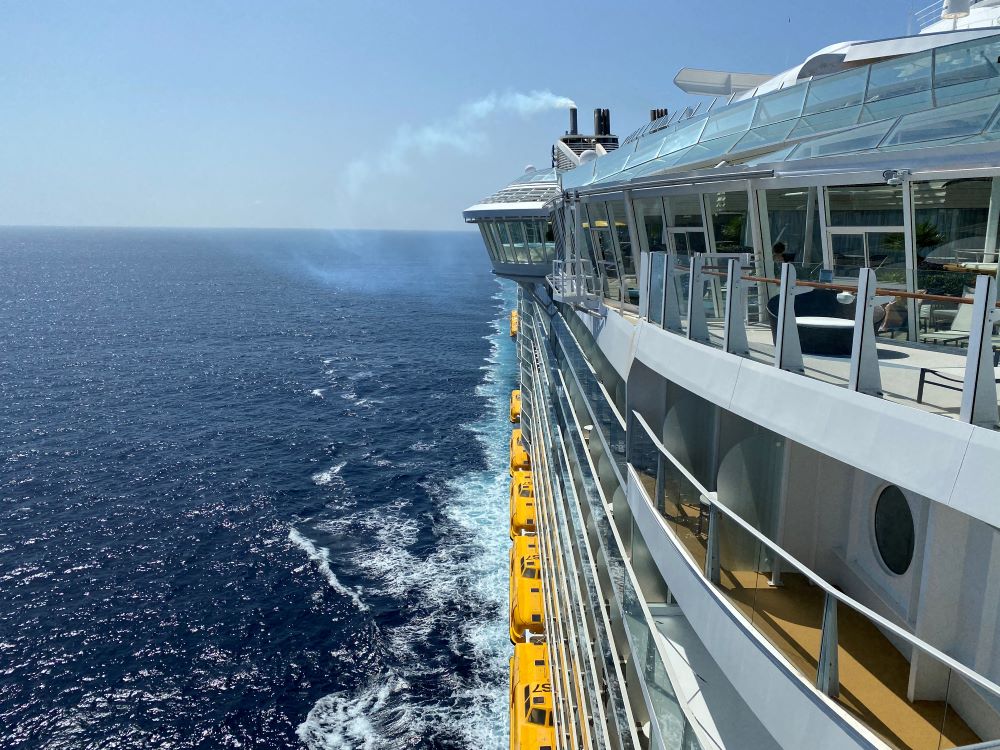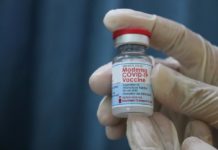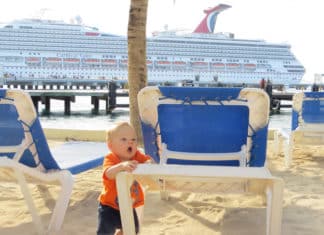Before the crisis, cruising was in a boom. The number of passengers and ships grew steadily as passengers were drawn in by the appeal of a great value on a vacation, combined with exotic locales and ships that are more and more like theme parks.

For all the appeal of cruising, however, there have always been concerns among some surrounding health and wellness. With thousands of passengers in a relatively small area — similar to a densely packed city or an airplane — there is the chance for illness to spread.
While the number of passengers falling ill is extremely small relative to the number of passengers who have no problem, it does happen.
Of course, with the health crisis that’s rocked the world, cruising was also hard hit. Cases were found on ships as the virus first spread, resulting in a roughly 18-month pause in sailing.
Now cruises have returned to sailing in large numbers, along with stringent new protocols surrounding testing, masking, and vaccines. Since then, the number of cases tied to cruise lines is low compared to the headlines received, but there have been cases at sea, just as there have been cases around the entire world.
So as cruises make their comeback, many wonder if it is safe to book… and to actually sail on a ship?
Below we cover the safety of cruising in three important areas: health risks, financial risks, and interruption risks. This should give you a better idea about if booking and sailing is right for you right now.
Understanding Health Risks of Taking a Cruise

First things first, you should know there is no set answer regarding your health when it comes to cruising. As we’ve seen with this crisis, what feels safe to one person is not the same for another. Some feel secure only with strict social distancing and mask wearing. Other people believe that the pandemic is something we just have to live with and have returned to normal life.
That makes it difficult to say with certainty what is “safe.” After all, what one person might consider safe isn’t the same for everyone.
Instead, we think that is appropriate to provide some context on what’s happening on cruise ships as they’ve come back.
New Procedures from Cruise Lines
When cruises from the United States returned, they did so under the CDC’s Conditional Sailing Order. The CSO lays out the baseline rules for cruise ships sailing from the U.S. to follow in order to return to sailing. This, combined with the cruise line’s own policies, lay the foundation for sailing safely.
While there are some minor differences between the cruise lines, the major initiatives are largely the same, no matter which line you sail.
Vaccination: The cornerstone of sailing safely is vaccination. Some lines require everyone sailing on the ship to be vaccinated in order to sail. Others allow some people ineligible for the vaccine to sail (such as small children) but place more stringent rules on the experience for those passengers. In general, all crew are vaccinated and the vast majority (often 95%+) of passengers have the shot.
Testing: As of now, all passengers across lines are required to test before boarding, even if vaccinated. Some cruise lines require a test at the pier before boarding. Most, however, require you to get your own test done a couple of days prior to sailing. If sailing unvaccinated, then more tests are usually required before and during the cruise.
Masks/Distancing: Except for a handful of cruises where everyone on the ship is vaccinated, expect masks to be required in some indoor areas. Some ships also designate areas for vaccinated passengers only, where the rules are relaxed some. In addition, expect reminders about keeping distance from others when possible.
Other Changes: While vaccinations, testing, and indoor masking are the most noticeable changes, there are a number of other adjustments. This includes improved air filtration, having staff serve food in buffets, increased hand sanitation stations, and more cleaning around the ship.
Virus Cases on Cruise Ships After a Return to Sailing
So how have the new protocols worked in keeping passengers healthy? Cruising returned in late June 2021, and since then nearly 100 ships have returned to sailing with passengers.
While regular case numbers are not released, in October 2021 the CDC did provide some hard numbers.
Between June 26, 2021 (the first day a ship returned with passengers from the U.S.) to October 21, 2021, there were 1,359 cases found on the dozens of cruise ships under the CDC’s watch. That comes out to about 12 cases per day across all ships and thousands of passengers and crew.
In our opinion, this shows that the protocols are working well. (The Omicron variant, discussed below, does cause concern regarding cases.) Over the approximately four months the CDC figures cover, it adds up to only about 1% a single day’s cases in the U.S. right now. Yes, there are cases on ships. However, the numbers seem to be relatively contained.
Omicron Update
With the fast-moving spread of the Omicron variant, it’s obvious that at least early in 2022, cruise ships have a challenge to keep passengers health.
Starting in 2021, the CDC assigned color status to ships. Green indicates no possible cases of COVID in the past seven days. Orange or yellow status indicates possible cases. In December 2021, the number of “non-green” ships jumped from 24% to 68% in the space of just over a week as the Omicron variant spread rapidly on land.
The variant has two characteristics that can cause trouble with cruising. First, it is highly transmissible. Second, it seems able to evade prior immunity and vaccines. There is hope that it is overall less mild and may burn out quickly. However, for at least the first weeks and months of 2022, Omicron appears to be an issue for any group setting.
What Happens if I or Someone Else Gets Sick on the Cruise?
As part of the plan to return to sailing, cruise lines had to tackle the question of what to do if there are cases on the ship.
In that case, the cruise lines have an entire plan in place. First, whomever is sick will be quarantined from others on the ship. The cruise line will also perform contact tracing to find and test any potential close contacts.
Depending on the circumstances, those with positive tests may be transported home before the end of the trip. Assuming you are not a close contact and the number of cases is relatively small, it’s likely the rest of the cruise will continue as normal. However, the response will depend on the specific situation onboard.
Final Thoughts on Keeping Healthy on a Cruise
It is a powerful signal that the CDC allows cruises to sail once again. In addition, beginning January 15, 2022, the current Conditional Sailing Order that lays out the rules lines must follow is set to become a voluntary program.
According to the health agency:
“While cruising will never be a zero-risk activity for spread of COVID-19, CDC has successfully worked with cruise ship operators to manage this risk and allow cruise ship operators to resume passenger operations in a way that mitigates the risk to crew members, passengers, port personnel, and communities.”
So far cruises that have returned have had limited cases with the new protocols in place, although new variants may raise concern among those at risk of illness. That said, being vaccinated combined with the new protocols should make cruising as safe — if not safer — than being in a crowd at a sporting event or concert.
Financial Risk to Booking and Taking a Cruise

When we talk about the financial risk of booking a cruise, we’re not talking about accidentally spending too much on your vacation.
Instead, we are talking about the possibility that your trip could be cancelled and you could be out what you paid in cruise fare. Or even worse, what about the financial well-being of the cruise line. Will cruise lines go out of business?
The good news is that these risks seem relatively low at this point.
Cruise Cancellations
No one wants to book a cruise, only to have it cancelled. While cancellations were frequent during the pause in sailing, since cruises have returned the number of cancelled trips has been low.
In addition, in instances where cruises are cancelled, many people came out ahead. That’s because many cruise lines have been generous with their compensation.
Not every line is the same, but many have offered back either a 100% refund of what you paid, or the option of a 125% cruise credit. So if you paid $2,000 for your cruise, you can receive your money back, or a $2,500 credit for a future trip.
There were some complaints on social media about these refunds taking some time. During the height of the crisis, we actually had firsthand experience with a booked cruise that was cancelled on March 24, 2020. The taxes and port fees were supposed to take 30 days to be refunded, but ended up not being returned until May 20, 2020.
With fewer trips being cancelled at the moment, however, those complaints have become fewer. In other words, you should have few issues getting your money back if the cruise line cancels, assuming you are sailing a major line that’s part of a publicly traded company. Still, it never hurts to have some travel insurance to give you extra peace of mind.
Cruise Line Bankruptcy
Is there a risk that you will book a cruise and the cruise line will go bankrupt? After all, the pandemic has hit the cruise companies extremely hard, and they spent more than a year without significant revenue.
For smaller, private cruise lines, there is no real way to know if this might happen. Since they are not public companies, there isn’t a way to get a look at how their business is holding up or what their balance sheets look like. We aren’t saying bankruptcy could or could not happen. We simply don’t know.
However, most of the largest cruise lines you sail from the United States are part of the three publicly traded companies: Carnival Corporation, Royal Caribbean Group, and Norwegian Cruise Line Holdings Ltd.
Under these companies are not only the namesake cruise lines, but also larger lines like Princess and Celebrity. (You can see a list of which cruise lines are owned by which company here.)
These public companies have had a rough go of it during this crisis, but seem to be on more stable footing. They have all raised billions of capital to see them through the foreseeable future.
In other words, right now the risk of bankruptcy for the major public cruise companies seems low. Still, if you’re worried about this risk then most travel insurance (which is smart to have anyway) covers financial default to offer some protection.
Update: In mid-January, Crystal Cruises — a subsidiary of Genting Hong Kong, which has a relatively small U.S. presence — suspended sailing due to financial difficulties of its parent company. It has said that passengers will receive a full refund.
Interruption Risk for Booking and Sailing on a Cruise

Before cruise lines suspended sailings back in March 2020, there were a number of instances where cruise ships were denied entry at a port due to fear of COVID-19 symptoms from passengers or crew on the ship.
As cruise lines get back to sailing in full force, could that happen again? Could you book a cruise to one destination and end up going to completely different ports?
Being Denied Ports of Call
Already, there are some ports that are closed to visitors and plan to be for an extended period. Canada, for example, has announced it is closed to cruise ships through February 2022.
As you can imagine, it’s a complex situation to ensure that health protocols on a cruise ship are in line with several different countries that a ship might visit. As well, those ports of call must have protocols in place that the cruise lines are comfortable with for the safety of their passengers.
At this point, a large number of ports do seem ok with cruises returning. Trips have returned in Europe, Asia, the Caribbean, Alaska, and elsewhere.
That said, not all countries are open to ships. In addition, ports of call always have the last say in allowing a ship to dock — especially if cases are reported on the ship. If a ship does in fact have suspected cases on board, there is a chance it could be denied entry into a port of call.
So far, however, that seems relatively rare. Even so, it’s our opinion that passengers should be ready for any potential changes to the itinerary and take it in stride.
Being Denied Port at Home
For some people, the risk they worry about may not be getting sick, but being stranded on the ship because there is a case on board. During the run-up to the cruise suspension in March 2020, there were several cases of ships being held in port and passengers quarantined.
With cases being found on ships since the return, it’s clear that is not the protocol anymore.
One part of the CDC framework to return is that agreements with cruise lines, ports, and health authorities must be in place. As well, there must be housing agreements in place should people need to be debarked.
According to Norwegian Cruise Line’s Sail Safe plan, they explain what should happen under the heading of “Debarkation Scenarios”:
We have developed a thorough mobilization and response plan focused on providing medical treatment, collaborating with local authorities and coordinating safe passage home for all guests and crew should the need arise. We have also established relationships with onshore medical institutions and enhanced our telemedicine consultation capabilities.
- NCL.com/sail-safe
One major feature designed to limit the number of people impacted by any outbreak is contact tracing. Cruise lines have employed new technologies and take advantage of the video surveillance on the ship to identify people that are in contact with any positive cases.
As well, vaccines and testing before boarding help to limit any initial cases.
In other words, large mass quarantines of healthy passengers like we saw at the start of the health crisis seem to be a thing of the past.
So Is It Safe to Cruise?
Is it safe to cruise? We see the answer as impacting three big areas: health risk, financial risk, and interruption risk.
Health risk will continue to be an issue as long as the pandemic is ongoing. With the CDC’s guidance, new protocols in place, and vaccines, it has been mitigated. Cruise lines have had promising results so far on cruises that have returned. Still, there’s always a chance of illness, unless the virus is eradicated.
Financial risk among the major public cruise lines — regarding your ticket paid or the cruise lines going bankrupt — seems low at this point. For smaller or independent lines, it’s more difficult to know as their financials aren’t public. Travel insurance usually offers protection against financial default of your carrier if you have concerns.
Interruption risk seems possible, but so far interruptions are minimal. Ports could deny cruise ships from stopping at all (like Canada and Australia have done), or if there are suspected cases on board. Even so, large quarantines of healthy passengers when the ship returns home seems unlikely.












